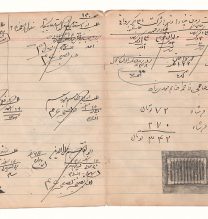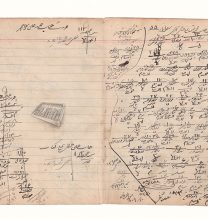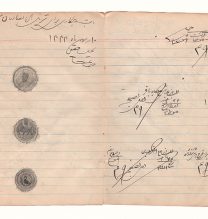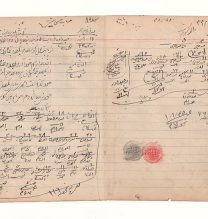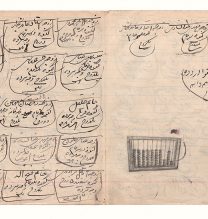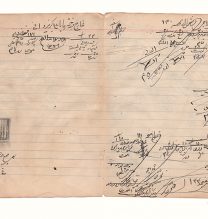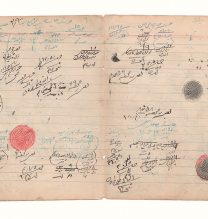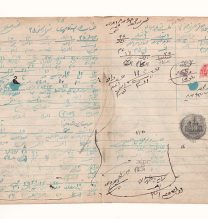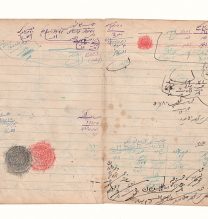Aghajoons Abacus
Farshido Larimian
We called my grandfather “Agha Joon”. A part of my childhood was in Agha Joon’s house, which he had built himself. Artistic creation can be considered as a behavior: a reaction to the environment and what is happening around us. The reconstruction and installation of Agha Joon’s house is an emotional and artistic reaction to the sudden disappearance of that house, a part of the artistic identity of the artist. If destroying Agha Joon’s house is an inevitable fact and outcome of the external circumstances, its reconstruction by the artist is also the inevitable outcome of his internal state, his thoughts, and his grief. Nonetheless, the artist who cares about the nostalgia, the past, and the elements of his artistic evolution cannot be neutral about the current era in wich he lives, his current environment and context of his current inspirations and productions. So the present works focus on two eras, two fields, and in fact, two histories and they are supposed to depict the artist’s attitude toward these histories and the interaction between them.
Aghajoon knew all the methods for laying bricks according to his job, building. Each of these methods has a specific function and it is used in its proper place. The photos and the other materials used in the collages, brick laying samples, and their oldness is consistent with the childhood and living in Aghajoon’s house. Choosing them for collage and illustrating the atmosphere of Aghajoon’s house, and this transition from tradition to modernity in culture, art and everyday life was not difficult. In some of them the laid bricks seem like grave stone and cross. They remind us of death, Aghajoon’s death, they remind the end; the end of the style of laying bricks, the end and Fall of Aghajoon’s house. The disappearance of any sign that connected us to that era. We can also see the traces of the artist’s previous works in this collection. As if those traces have come to accompany the artist, and to console him at the time of grief. They are different and new but also remind us of the works in the collections “As if they belong to each other” and “present perfect continuous”. They resemble phantoms or ghosts from his present and the past moving through his career, haunting every one of the works, in the eye of the beholder.
“Aghajoon” used to have an abacus; he passed away but we still keep that abacus. A while ago, one day I came to an accounting notebook that belonged to 100 years ago. It included financial transactions and some records of the daily sold goods. The writings seemed like a sort of calligraphy. Although I know Persian language I can’t read them clearly. Nevertheless I enjoy the calligraphy and the visual compositions in these writings. He may not have been aware of his work’s artistic value but just like a real artist he had some rules or principles to follow.
He had a very economical attitude toward everything and we can trace this economy even in the structure of this notebook. It had been kept and used for 18 years. In that era they believed that they had to make the best of everything and avoid wasting things. At the same time one needs to know about preservation, maintenance and repair when it comes to keep something for 18 years.
This notebook and its content reminds me of Aghajoon, his abacus and coins. I thought that my choices of drawing would create a better atmosphere for feeling the emotions of an unknown artist hidden in this notebook, Aghajoon and myself.
